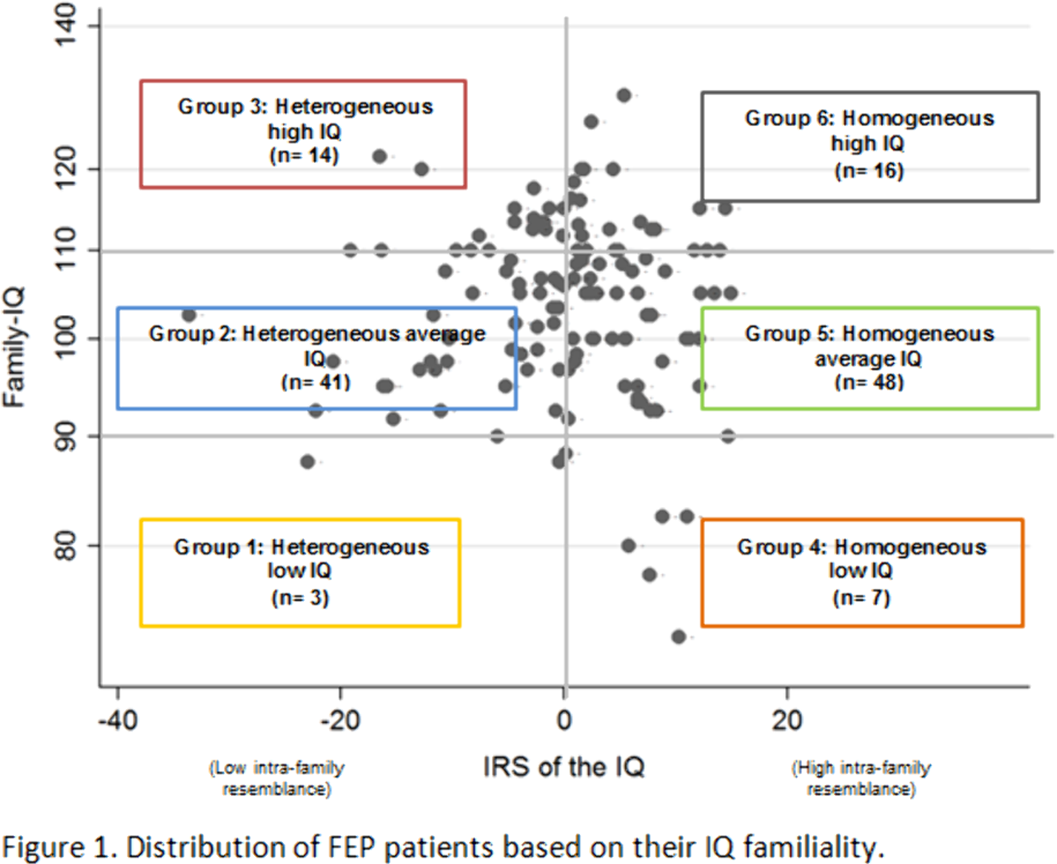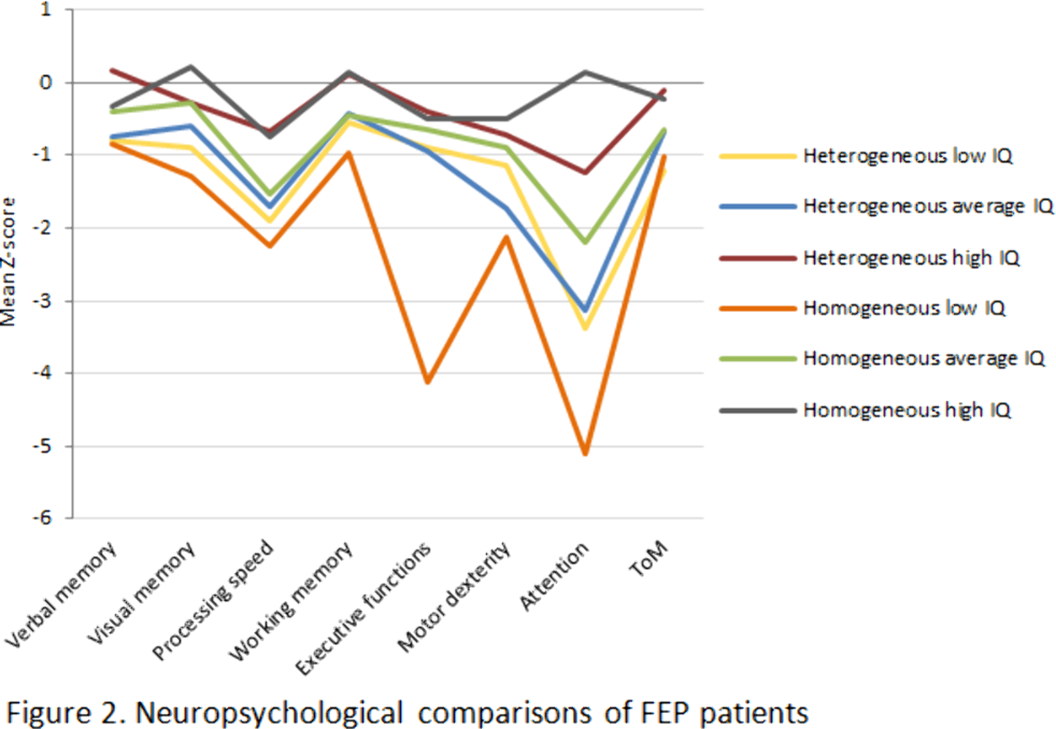No CrossRef data available.
Article contents
Family aggregation of the Intelligence Quotient: understanding its role in first episode of psychosis
Published online by Cambridge University Press: 01 September 2022
Abstract
The familiality of intelligence quotient (IQ), understood as its similarity among family members, might be related to different manifestations in first episode of psychosis (FEP) patients.
To estimate the IQ familiality through the intra-family resemblance score (IRS) in FEP patients and their unaffected first-degree relatives; and to analyze if the deviation from the family-IQ is related to the patients’ premorbid, clinical and cognitive characteristics.
Individuals from 129 families participated in this study (129 patients, 143 parents, 97 siblings). For each family, two values were estimated: the family-IQ, obtained by the mean IQ of the patient and his/her relatives (using the WAIS vocabulary subtest); and the IRS, an index previously reported that indicate intra-family heterogeneity (IRS<0) or homogeneity (IRS>0) for a given trait. According to the IRS and the family-IQ, patients were assigned to 6 groups (Figure 1).
FEP patients in families with heterogeneous IQ (IRS<0) had a significantly lower IQ than their relatives (p<0.001). Also, those with low IQ and from heterogeneous families had poorer childhood adjustment (p=0.001). The patients with high IQ belonging to homogenous families showed less positive symptoms at baseline (p=0.009). FEP patients in homogenous families due to low IQ evidenced the lowest neuropsychological performance (Figure 2).


The analysis of the IQ familiality and the concordance/discordance of the patients’ and relatives’ IQ, offers a new approach for the characterization of different premorbid, clinical and cognitive profiles in FEP patients. The relationship between deviation from the family-IQ and poor premorbid childhood adjustment supports the neurodevelopmental hypothesis of schizophrenia.
No significant relationships.
- Type
- Abstract
- Information
- European Psychiatry , Volume 65 , Special Issue S1: Abstracts of the 30th European Congress of Psychiatry , June 2022 , pp. S114 - S115
- Creative Commons
- This is an Open Access article, distributed under the terms of the Creative Commons Attribution licence (http://creativecommons.org/licenses/by/4.0/), which permits unrestricted re-use, distribution, and reproduction in any medium, provided the original work is properly cited.
- Copyright
- © The Author(s), 2022. Published by Cambridge University Press on behalf of the European Psychiatric Association





Comments
No Comments have been published for this article.